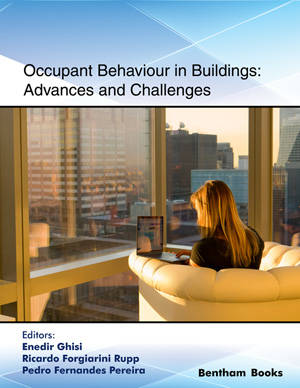Abstract
The new directive 2018/844/EU on Energy Performance of Buildings and Energy Efficiency, supports the change of building into smarter, more energy-efficient and include the perspective of the occupants' needs. The knowledge of occupant behaviour is the centre of the balance between the buildings energy efficiency and its indoor environmental quality. This chapter presents a state-of-the-art of the buildings occupant behaviour, presenting the new developments and future trends. It summarises research in which a series of methodologies were developed to supply relevant data to the building management systems (BMS). These methodologies use a monitoring system based on environmental sensors, namely relative humidity, temperature, and carbon dioxide. New methods to detect the occupant actions in the operation of building systems were summarised and compared. The methodologies were based on statistical tools and machine learning techniques. They can be applied to different case studies since they can adapt to the local environment under a self-learning strategy. The drivers of behaviour for the operation of those building systems were also analysed. Two methodologies that allowed to predict the occupant actions taking into account the parameters that influenced the occupant behaviour were described. It was also possible establishing the seasonality of drivers of behaviour. The overall results highlight that the actions, motivations, and impacts of a specific set of occupants performed in building systems can significantly vary depending on the room and on environmental parameters.
Keywords:
Action detection, Drivers of behavior, Intelligent buildings, In situ data acquisition, Occupant behaviour.

